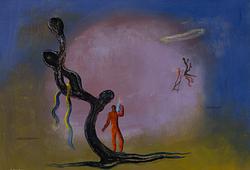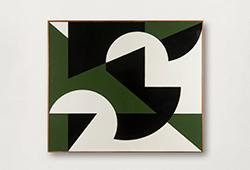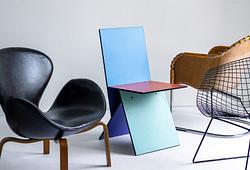Björn Trägårdh
and Svenskt Tenn, a pewter and brass framed wall mirror, Svenskt Tenn Sweden, this pattern was designed ca 1930-34.
A pattern of fretted pewter, lined with brass, 70 x 65 cm.
Minor wear. Minute crack to the mirrorglass to the frame in upper right hand corner
Saleroom notice
Liten spricka i spegelglaset i ramen i övre höger hörn. Minute crack to the mirrorglass to the frame in upper right hand corner
Literature
Monica Boman (ed), 'Estrid Ericson - Orkidé i Vinterlandet' (Orchid in the Winterland), Carlsson Bokförlag, 1989, 2000, pp 74-76. Björn Trägårdh designed the braided decor 1930-34 and used it, for instance, around the mouth of an otherwise spherical vase.
Björn Trägårdh (1908- 1998)
Trägårdh was active as a designer for Svenskt Tenn between the years 1927 and 1934. He was the youngest and perhaps one of the most talented of the artistic collaborators at the time. He designed furniture, decors and objects with a more modern expression than several of his colleagues.
Designer
Björn Trägårdh (1908-1998) was an artist, furniture designer, draftsman, and graphic artist. He worked as a designer at Svenskt Tenn from 1928 to 1936, where he designed furniture, pewter objects, and other art industry products. Trägårdh joined Svenskt Tenn when he was only 20 years old and was influenced by a functionalist design approach. He worked with a restrained color palette, using black, white, and gray as his main colors. Additionally, he and Estrid Ericson were exhibition organizers for several notable exhibitions. After Josef Frank joined Svenskt Tenn, Trägårdh moved to Paris in 1939, where he worked as a visual artist. During and after the war, he returned to the field of crafts and the fashion industry, creating buttons and brooches for fashion houses such as Dior, Bruyère, and Schiaparelli. Trägårdh's work can be found in the collections of the National Museum in Stockholm, the Gothenburg Museum of Art, the Institut Tessin in Paris, as well as art museums in Tours and Pau, France.
Read more
















































